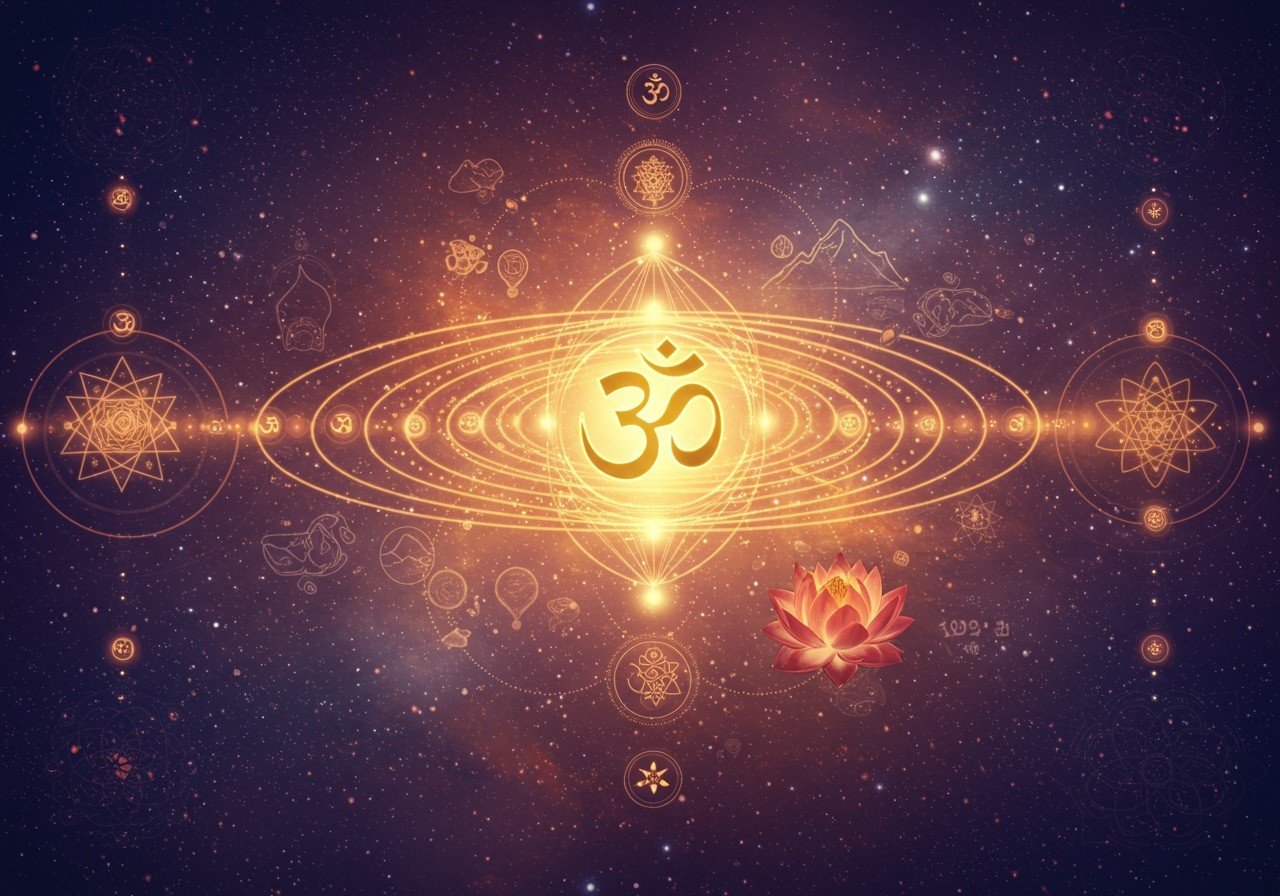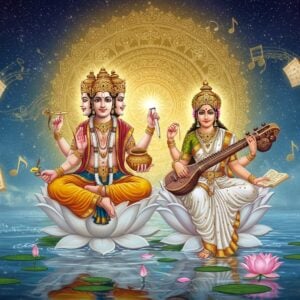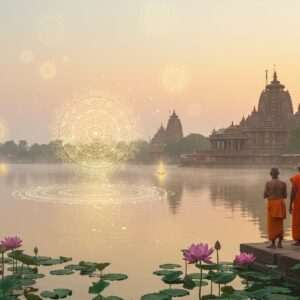
Brahman, a core concept in Hindu philosophy, signifies the ultimate reality, the cosmic principle underlying all existence. This comprehensive guide explores the concept of Brahman, addressing common questions and offering resources for a deeper understanding. This guide is designed for culturally rooted Indians who value tradition and convenience.
What is Brahman?
Brahman represents the highest universal principle, the absolute reality of the universe. It is conceived as eternal, conscious, irreducible, infinite, omnipresent, and the spiritual core of the universe. Brahman transcends the physical world, acting as the source of all creation and existence.
Explore the concept of Vishnu, the preserver, in relation to Brahman.
Key Aspects of Brahman
- Ultimate Reality: Brahman is the fundamental reality transcending both existence and non-existence. It is the non-physical source of all that is. It is beyond human comprehension and is often described as the ground of being.
- Cosmic Principle: Brahman is the creative principle active within the entire world. It is the dynamic force behind the manifestation of the universe and everything in it. It is not merely a static entity but a vibrant force of creation.
- Relationship with Atman: Brahman is often discussed in relation to Atman (the individual self). Depending on the philosophical school, the relationship between Brahman and Atman is understood differently. In Advaita Vedanta, Brahman and Atman are considered identical, while other schools propose different relationships.
- Sat-Chit-Ananda: Brahman is described as Sat-Chit-Ananda, meaning existence-consciousness-bliss. This signifies Brahman’s nature as pure being, pure awareness, and pure joy. It highlights the essential qualities of Brahman as experienced through spiritual realization.
- Not a Personal God: Brahman is not typically seen as a personal God with human-like characteristics. It is a more complex and abstract concept, representing the ultimate ground of reality beyond any limited depiction. It is often described as being beyond human comprehension.
Different Interpretations of Brahman
Different schools of Vedanta philosophy offer varying interpretations of Brahman:
- Advaita (Nondualist): Brahman is distinct from anything phenomenal, and perceptions of difference are illusions. Atman is identical to Brahman. This non-dualistic view emphasizes the oneness of reality.
- Bhedabheda (Dualist-Nondualist): Brahman is both different from and non-different from the world. Phenomenality imposes conditions on Brahman, creating the appearance of duality while the underlying reality remains non-dual. This school attempts to reconcile the apparent duality of experience with the underlying unity of Brahman.
- Vishishtadvaita (Qualified Nondualist): There is a relationship between Brahman and the world, similar to the relationship between a soul and body. Brahman is identified with the personal God Vishnu. This school emphasizes the intimate connection between Brahman and the world.
- Dvaita (Dualist): This school rejects the identity of Brahman and the world. It maintains the complete separateness of the supreme being, often identified with a personal God. It emphasizes the distinction between the individual soul and the divine.
Discover the teachings on Krishna, the supreme God of compassion and love.
Exploring Brahman through Practice
How is Brahman different from the gods? While gods are manifestations of Brahman’s power, Brahman itself transcends these forms. Can one experience Brahman? Through spiritual practices like meditation and yoga, individuals can cultivate a deeper connection with Brahman. Why is Brahman important? Understanding Brahman provides a foundational principle for understanding existence and our place within the universe.
Learn about common meditation challenges and how to overcome them.
Explore breathing exercises to enhance your meditation practice.
Common Misconceptions about Brahman
It’s crucial to clarify some common misconceptions. Brahman is not a deity with a specific form; it is formless and transcends human comprehension. Brahman is inclusive of various spiritual paths and is not restricted to certain individuals or castes.
Resources for Learning More
Several resources can aid in your exploration of Brahman:
- Sacred Texts: The Upanishads, Bhagavad Gita, and Brahma Sutras are primary sources for understanding Brahman. These texts offer profound insights into the nature of reality and the concept of Brahman.
- Commentaries: Commentaries by renowned philosophers like Adi Shankaracharya provide valuable interpretations of the scriptures. They shed light on the complexities of Brahman and its relationship to the world and the individual self.
- Online Resources: Online courses, lectures, and online communities can offer accessible introductions to the concept of Brahman. These resources provide various perspectives and opportunities for discussion and learning.
Additionally, consider engaging with local temples, spiritual centers, or retreats for a more immersive experience.
Poojn.in: Supporting Your Spiritual Journey
Poojn.in, India’s largest cultural goods and services store, offers a wide range of products to support your spiritual journey, including pure copper and brass items, traditional dhoop and agarbatti, specialized puja thalis, sacred threads and malas, pure ghee for havan, and ritual clothing and accessories.
Find high-quality camphor for your rituals at Poojn.in.
Explore camphor tablets at Poojn.in.
We provide expert guidance, verified and pure ritual items, convenient online ordering, pan-India delivery, and bulk ordering options. Visit www.poojn.in or contact us at 91 3369029784 for more information.
Embark on Your Journey of Understanding
Understanding Brahman is a journey of self-discovery. Through exploring this profound concept, you connect with the rich tradition of Hindu philosophy. Embrace the journey, and may you find deeper meaning and purpose in your life.


